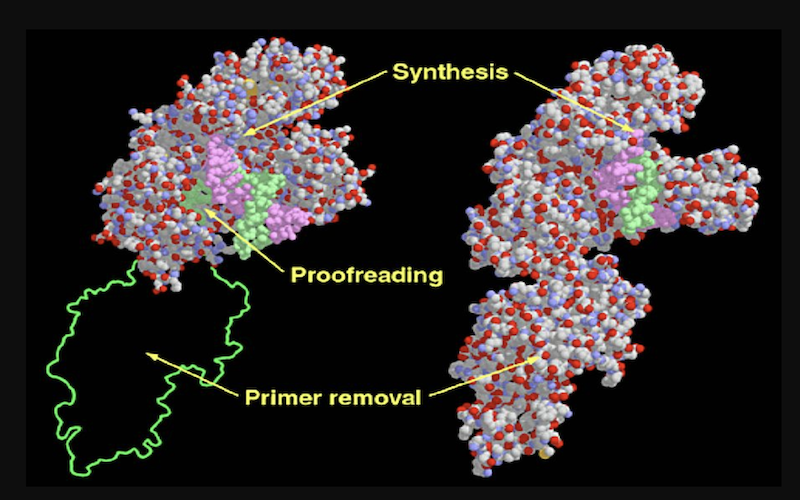DNA polymerases are essential enzymes in cellular biology, responsible for the replication and repair of DNA. These enzymes synthesize new strands of DNA by adding nucleotides to a pre-existing strand, using it as a template. The accuracy and efficiency of DNA polymerases are critical for maintaining the integrity of the genetic information across generations.
Structure and Function of DNA Polymerases
DNA polymerases have a conserved structure, typically comprising several domains that each play a role in the enzyme’s function. The catalytic core is the most critical part, containing the active site where nucleotide addition occurs. The enzyme’s structure also includes domains that ensure processivity, allowing it to synthesize long stretches of DNA without dissociating from the template.
These enzymes work by reading the template strand in the 3′ to 5′ direction and synthesizing the new strand in the 5′ to 3′ direction. The active site of the polymerase facilitates the formation of phosphodiester bonds between the nucleotides, using the template strand to ensure that the correct nucleotide is added. The energy for this reaction comes from the hydrolysis of the triphosphate group on the incoming nucleotide.
Types of DNA Polymerases
There are several types of DNA polymerases, each with specialized functions in the cell. In prokaryotes, the primary DNA polymerase responsible for DNA replication is DNA Polymerase III. This enzyme is highly processive and works in conjunction with a sliding clamp protein to ensure efficient replication of the entire genome. DNA Polymerase I, another important enzyme in prokaryotes, is primarily involved in DNA repair and the removal of RNA primers used during replication.
Eukaryotic cells have more complex replication machinery, with multiple DNA polymerases playing distinct roles. DNA Polymerase α initiates replication by synthesizing a short RNA-DNA primer, while DNA Polymerase δ and DNA Polymerase ε are responsible for synthesizing the lagging and leading strands, respectively. DNA Polymerase γ is specialized for mitochondrial DNA replication.
Fidelity and Error Correction Mechanisms
The fidelity of DNA replication is paramount to preventing mutations, which could lead to diseases like cancer. DNA polymerases have intrinsic proofreading abilities to ensure high fidelity during DNA synthesis. Most DNA polymerases possess a 3′ to 5′ exonuclease activity, which allows the enzyme to remove incorrectly paired nucleotides. If an incorrect nucleotide is incorporated, the polymerase pauses, excises the incorrect base, and then resumes synthesis with the correct nucleotide.
This proofreading mechanism significantly reduces the error rate of DNA replication, making DNA polymerases highly accurate. However, despite this high fidelity, some errors do escape correction, leading to mutations. Cells have additional repair mechanisms, such as mismatch repair, to correct these errors after replication.
Role in DNA Repair
Beyond replication, DNA polymerases are also involved in various DNA repair processes. DNA damage can occur due to environmental factors like UV radiation or chemical exposure, leading to mutations if not properly repaired. DNA polymerase β in eukaryotes plays a critical role in base excision repair, a pathway that fixes small lesions in the DNA.
Other DNA polymerases, such as DNA polymerase η, are involved in translesion synthesis, a process that allows replication to continue past damaged sites in the DNA. While these polymerases can bypass lesions, they do so with lower fidelity, which can result in mutations.
Biotechnological Applications
DNA polymerases have become indispensable tools in biotechnology. The most well-known application is the polymerase chain reaction (PCR), a technique used to amplify specific DNA sequences. Taq DNA polymerase, derived from the thermophilic bacterium *Thermus aquaticus*, is commonly used in PCR due to its heat stability, allowing the enzyme to function at high temperatures during the denaturation step of PCR. Other applications include DNA sequencing, where DNA polymerases are used to incorporate labeled nucleotides into growing DNA strands. These labeled nucleotides can then be detected to determine the sequence of the DNA.





